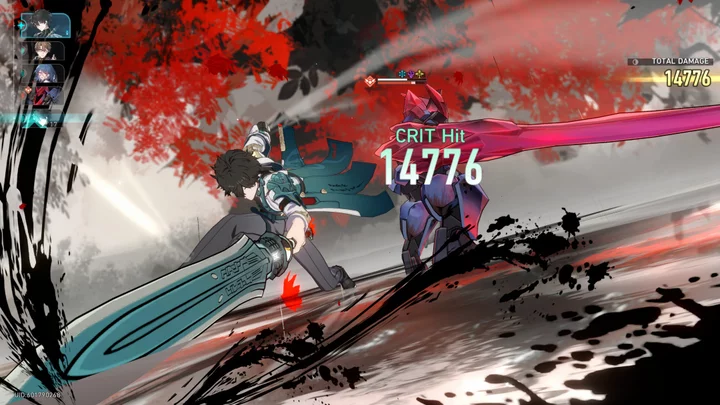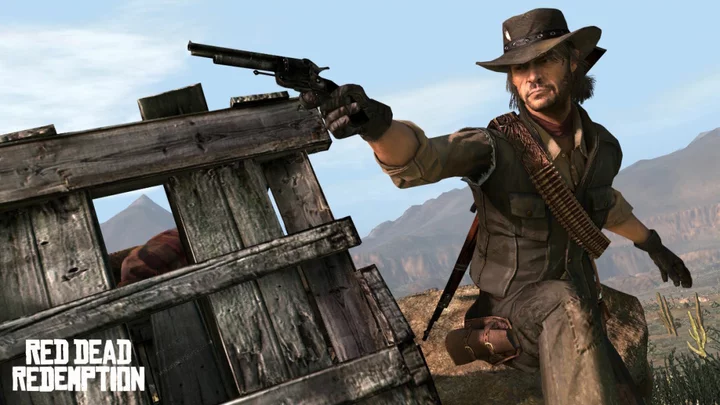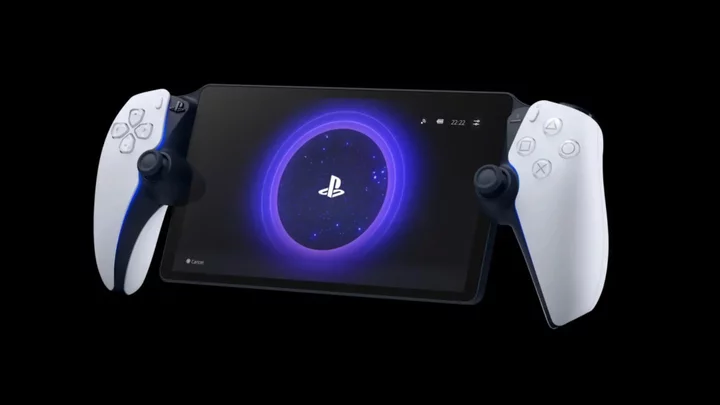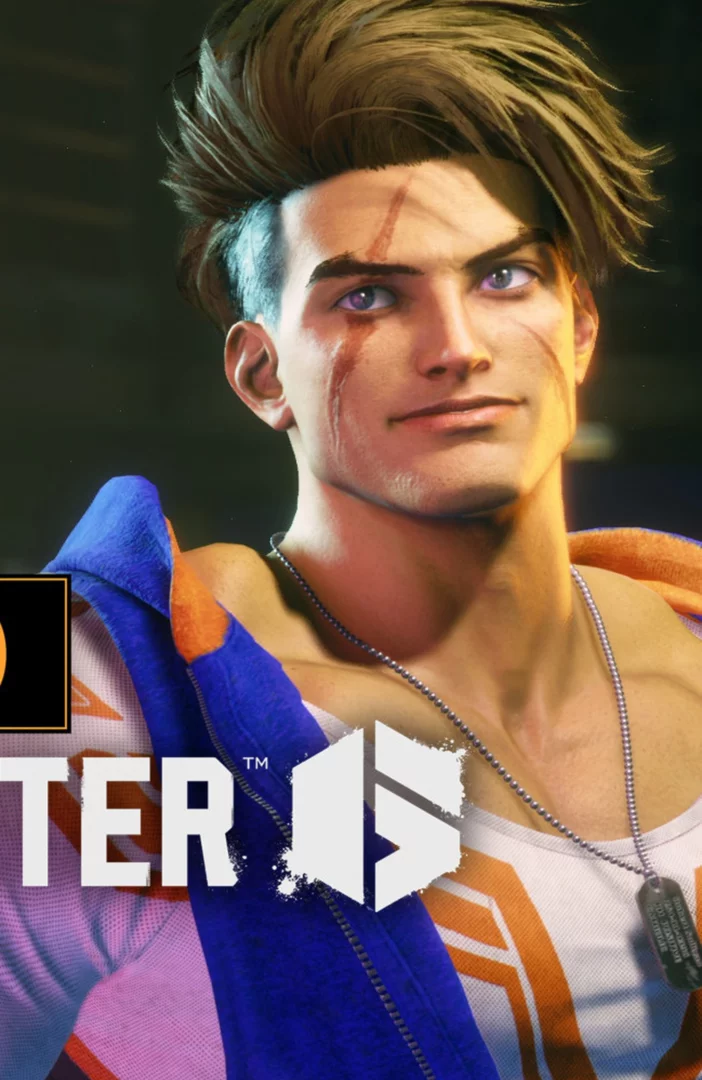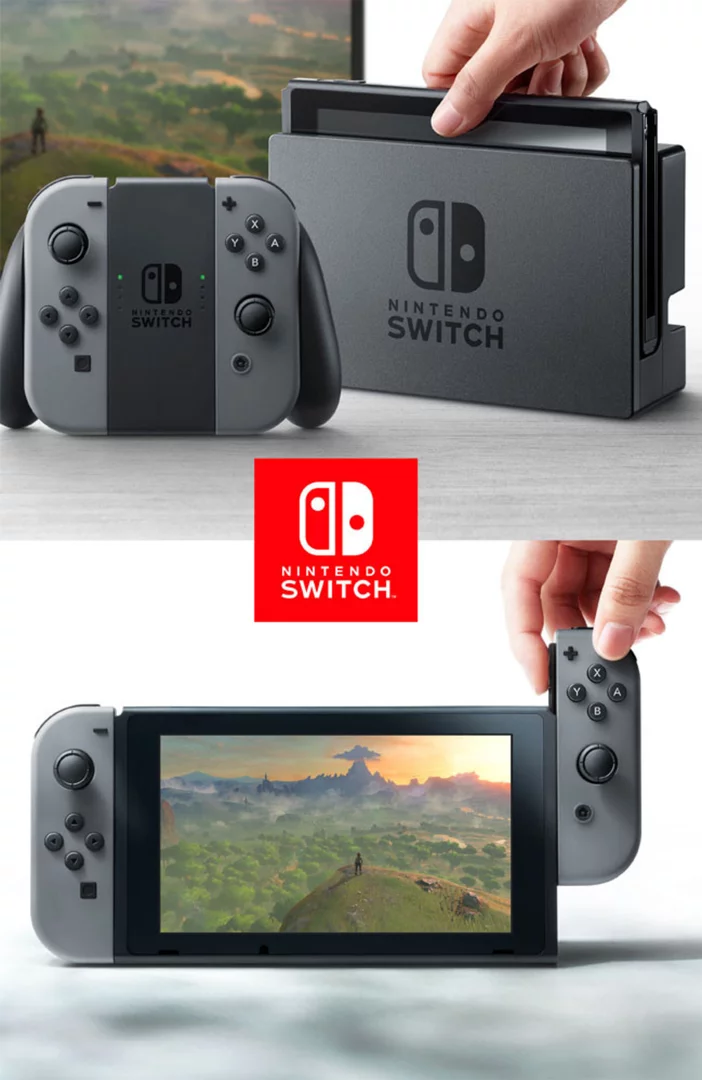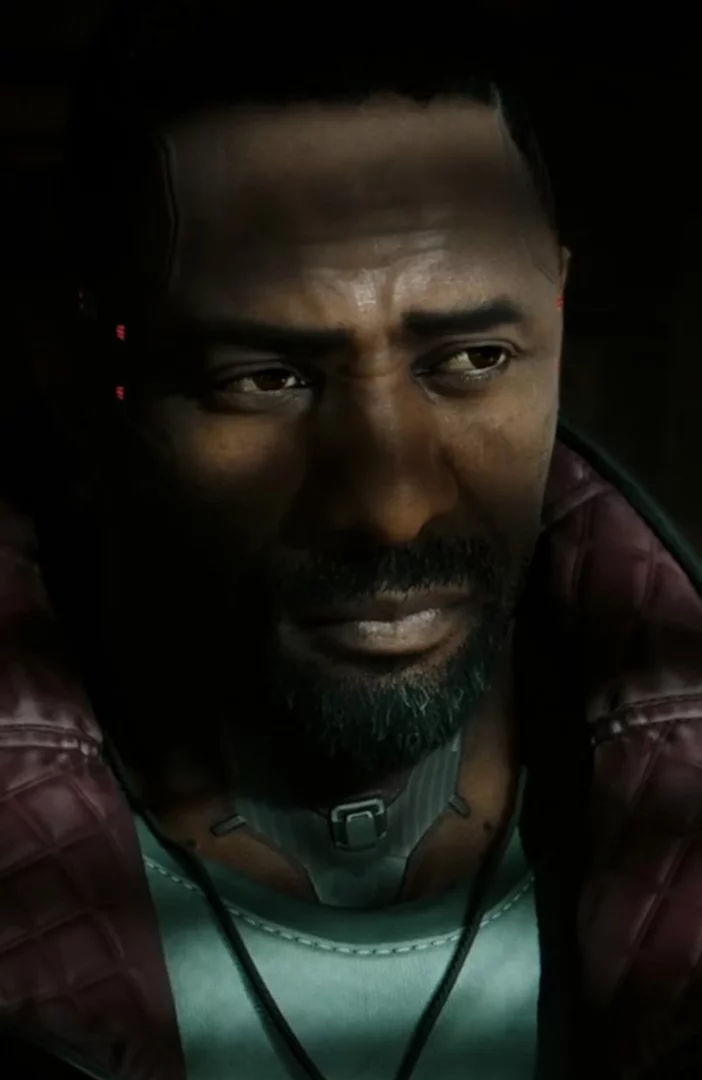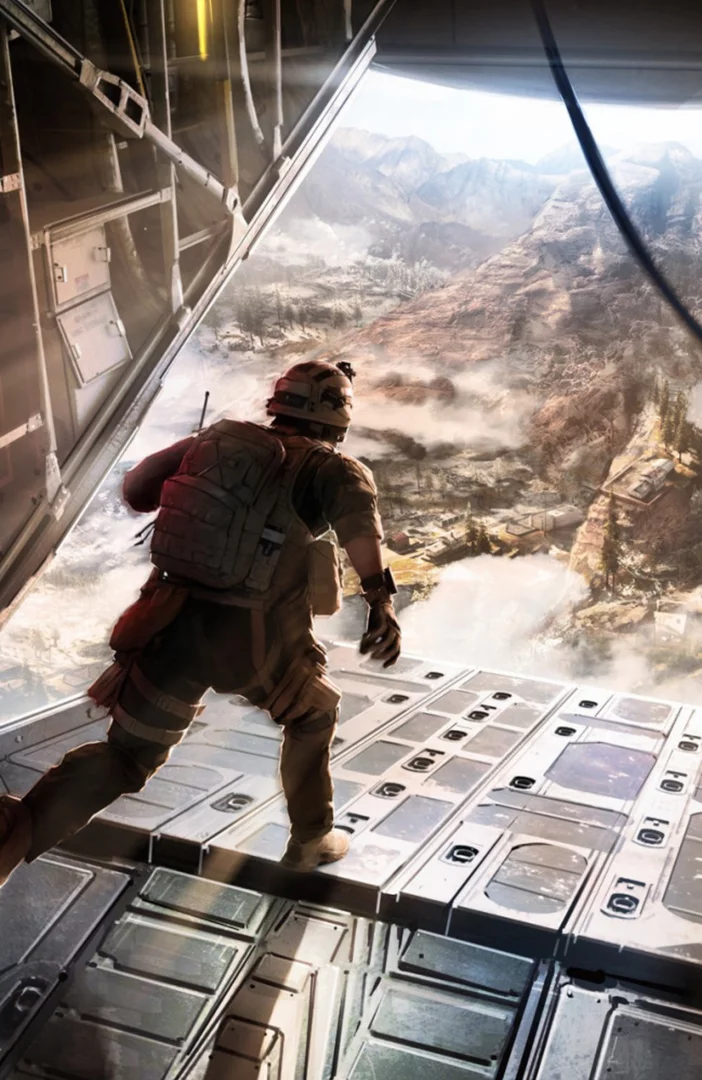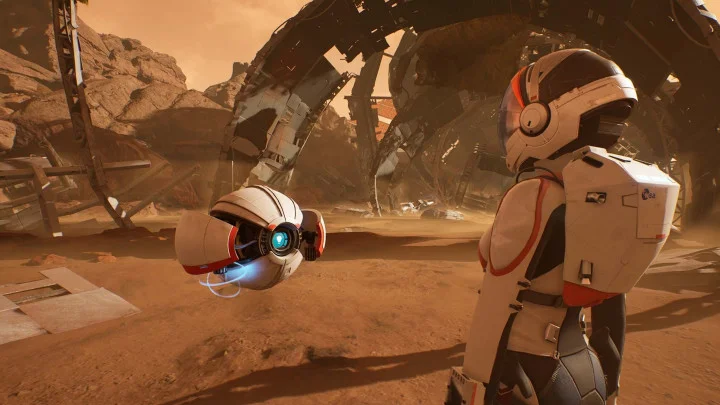With Honkai: Star Rail, developer Hoyoverse takes a stab at a space opera, and the result is impressive. The free-to-play role-playing game features stylish and fantastic anime-inspired visuals, excellent musical accompaniments, encyclopedic levels of lore, and surprisingly energetic combat. Even better, it refines the grind commonly associated with no-cost games, making it a fantastic title to explore as new events and story beats drop. Sparse environments and a narrative still in its infancy may prove irksome to some, but Star Rail is a highly polished and overall excellent PC game that will only get better with time, earning it our Editors' Choice award.
(Credit: Hoyoverse)Blazing Through Space
You are the Trailblazer, the protagonist in this adventure. You choose a male or female protagonist during the prologue, and you are then imbued with a powerfully magical, planet-corrupting artifact called a Stellaron. After you're rescued by the crew of the Astral Express, an intergalactic train, you set forth with those newfound allies to retrieve the other Stellaron.
Superficially, the story is fairly easy to follow, but there's a lot of lore to dive into if you’re curious about the game's universe. There are countless factions working behind the scenes, such as the god-like Aeons; the antagonistic Antimatter Legion; the ancient, sage-like Genius Society; and the mysterious Stellaron Hunters that set the game events in motion. It’s a deep well of details that only gets more interesting considering that Honkai: Star Rail is an alternate universe to Honkai Impact 3rd (another Hoyoverse title), and features new spins on characters from that release.
Honkai: Star Rail is still on the first leg of its journey, and there are many more episodes planned for release. As of this writing, the 1.2 update is out, delivering new story chapters, new characters, and new items. The story is nowhere near its conclusion, which could potentially turn off some players. On the other hand, you can expect Honkai: Star Rail to get regular content updates for many months, if not years.
Exploring the Universe
The game’s world is presented on a snazzy astral map. Currently, there are only three planets to explore, with each one having various smaller towns and dungeons. You navigate them to advance the plot or grind for experience and materials. Generally, towns have few or no enemy encounters, while dungeon zones are littered with enemy units that you must avoid or engage. There are also puzzle elements to solve, like completing a circuit or lighting up tiles. Some of these are required to progress, but many are optional interactions you can undertake for extra loot. The map menu conveniently displays how many chests are in each zone, which makes 100% completion a cinch.
Although the worlds are wonderfully detailed, they feel somewhat small in scale. Granted, it’s unfair to expect Genshin Impact-size regions and verticality for each planet, but I often found myself wishing that many of the areas, particularly the towns, were larger. Make no mistake, the dungeons and maps aren't tiny, but they feel a bit flat due to the lack of climbing and multiple levels.
That said, there is no shortage of NPCs, points of interest, and outright junk you can interact with during the adventure. On top of that, there are numerous side quests, character quests, and lore-dense text to explore.
(Credit: Hoyoverse)Galactic Beat Down
Unlike Hoyoverse’s last few releases, Star Rail is a turn-based RPG through and through. Touching enemy units in dungeons (or specific story situations) pits your party against groups of foes. To give yourself an advantage, you can melee enemies on the map to preemptively strike them. This lowers their Break threshold at the start of the round (more on Breaks in a bit).
Honkai: Star Rail is an extremely streamlined RPG, with each character having a basic Attack, a Skill (special attack), and an Ultimate Attack. There are no menus; all your actions are available with simple button presses. The character attack order is determined by the party member's speed (called Action Value). This is useful for planning turns in advance, as you ideally want to deal good damage or outright eliminate enemies before they can unleash their attacks.
After selecting a target and taking action, the turn shifts to the next character in the list. This is fairly standard stuff, and at a glance resembles the battles in Final Fantasy X. However, there are a few combat wrinkles that make it more engrossing. A basic Attack move generates skill points. You can have up to five Skill points at a time, which is a resource your entire party shares. Skills consume a point, and their utility varies by character. The Trailblazer, for example, can strike multiple opponents with his/her special skill. The plucky March 7th (yes, she's named after a date) casts a shield on an ally with her skill. Dan Heng deals heavy single-target damage, as well as a turn-delaying debilitation. You must manage your skill points by frequently mixing in normal attacks.
(Credit: Hoyoverse)Attacks and Skills generate energy for the active character. When enough energy is produced, the character’s Ultimate Attack icon lights up next to its portrait. Unlike Attacks and Skills, Ultimate Attacks ignore the turn order and are immediately initiated. This lets you preempt an enemy’s turn, giving you a dynamic and powerful ace up your sleeve to quickly finish a fight. The one-button actions, flashy offense, and turn-ignoring Ultimate Attacks give Honkai: Star Rail a pleasantly action-like feel despite being an entirely turn-based affair.
Party synergy is also vitally important. Each character has an elemental alignment and deals bonus damage to opponents vulnerable to said element. More importantly, enemies take Break and HP damage from attacks, and targeting a weakness deals more Break damage. Break works similarly to the stagger gauge in Final Fantasy XVI; once the Break gauge is depleted, the target falls prone and takes bonus damage from incoming attacks. They are also afflicted with additional status effects, such as freeze, damage over time, or even delayed turn order, depending on the attack.
You want to put characters that synergize well with each other into your active party. Honkai: Star Rail is fairly flexible in this regard, giving you a handful of free characters as you chip away at the story. Natasha, for instance, is an outstanding healer who keeps your party in top shape throughout the entire adventure. Serval is a lightning-calling rock star who decimates mechanical foes. The game also has special events that periodically appear, which potentially reward you with new characters. With version 1.2, Yukong has been added to the roster as a free character, giving you an extremely powerful, attack-buffing support character.
Combat is shockingly energetic, engaging, and streamlined. The visual effects and attack animations ooze style. The Break system and elemental weaknesses add a fascinating layer of strategy to the game. In fact, Honkai: Star Rail is one of the few turn-based RPGs where I went out of my way to look for fights, because the combat is so much fun.
(Credit: Hoyoverse)Incredible Presentation
Presentation is another one of the game’s outstanding pillars. Honkai: Star Rail has anime-style character models and shading, but the art direction is slightly more mature than what you'll see in Genshin Impact. In fact, it more closely resembles the action-focused Honkai Impact 3rd. The graphical fidelity is top-notch, so the characters and environments are vibrant and razor sharp.
This presentation goes well beyond the visuals. Star Rail’s soundtrack is superb and brilliantly complements the feel of each zone or combat encounter. The musical accents, as well as the outrageous transformations and scenarios during boss encounters, are a real highlight of the game, delivering some of the most thrilling boss crescendos since Metal Gear Rising: Revengeance.
(Credit: Hoyoverse)The Elephant in the Room
Honkai: Star Rail is an excellent, sprawling RPG that’s made all the more impressive when you consider that it’s entirely free to play. Naturally, you may wonder how a game this robust can pull it off. The answer? Gacha. Hoyoverse makes sure you get a solid roster of free characters for your party, but the showstoppers are the 5-star hero units you roll for in the game’s gacha system. Essentially, you invest premium currency (called Stellar Jade) to buy rail tickets that you then spend to roll on these characters. Stellar Jade is awarded to you when completing quests, events, and achievements, but it can also be purchased with real money. One gacha roll requires 160 Stellar Jade, which is roughly about $2.50 per roll.
Naturally, this process is heavily randomized. New 5-star heroes go on a promotional banner, which is a limited-time offering that gives them higher priority over standard 5-star characters if you hit the jackpot. Honkai: Star Rail uses a pity system, similar to what’s in Genshin Impact, that guarantees a 5-star unit after approximately 90 rolls. However, you only have a 50% chance of getting the character you roll for in promotional banners. As mentioned, you can also buy Stellar Jade with real cash to speed up the process. But this is costly, and essentially glorified gambling.
We would never encourage you to spend real money to gamble, and it’s vitally important that you be aware of the gacha system before investing too much time in the game. Honkai: Star Rail is perfectly playable without spending real money, and the game gives you a steady (albeit small) supply of Stellar Jade through daily quests, weekly activities, and special events. Please game responsibly.
(Credit: Hoyoverse)Can Your PC Run Honkai: Star Rail?
Despite its graphical flourish, Honkai: Star Rail doesn't require high-end system specs. To play Honkai: Star Rail at minimum settings, your PC should have at least an Intel i3 CPU, Nvidia GeForce GTX 650 or higher GPU, 6GB of RAM, 20GB of storage, and the 64-bit Windows 7 operating system. Hoyoverse recommends a PC with an Intel i7 CPU, an Nvidia GeForce GTX 1060 GPU equivalent or higher, 8GB of RAM, 20GB of storage space, and the 64-bit Windows 10 OS.
We tested Honkai: Star Rail on a desktop computer with an AMD Ryzen 5 3600 CPU, Nvidia GeForce RTX 2080 GPU, and 16GB of RAM. The overall performance was excellent, with smooth 60-frames-per-second visuals. The game supports gamepads, as well as keyboard and mouse, and both control schemes feel great. Honkai: Star Rail is not officially supported on Steam Deck.
Why You Should Game on a PCHonkai: Star Rail Is Absolutely Worth a Download
It’s rare to encounter a turn-based RPG that feels as stylish and engrossing as an action game, but Honkai: Star Rail pulls it off with aplomb. It plays like RPGs from yesteryear (such as Final Fantasy X-2 and Super Mario RPG), yet the sci-fi setting, Persona-esque stylishness, and excellent presentation make it feel thoroughly distinct. If you can avoid the gacha minefield and show some restraint with spending, you'll have a great time. And it will only get better, as new episodes are added to expand the story. As such, Honkai: Star Rail is easy to recommend and worthy of our Editors' Choice award.
For in-depth video game talk, visit PCMag's Pop-Off YouTube channel.

